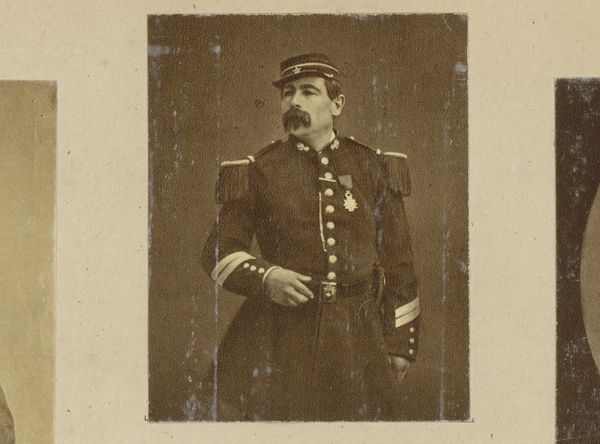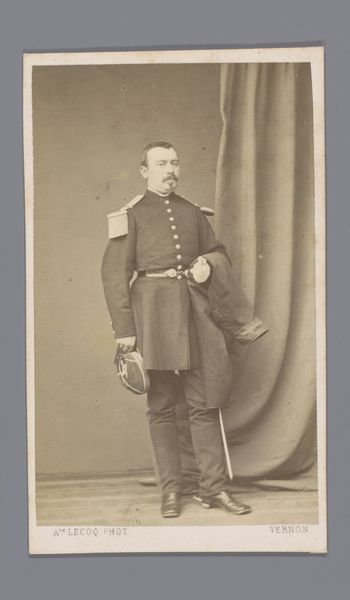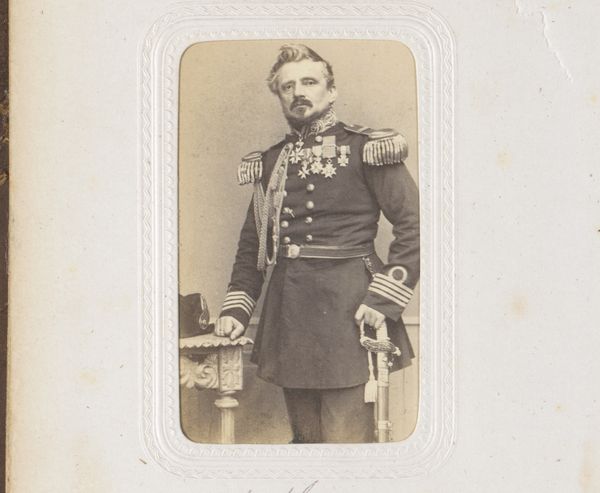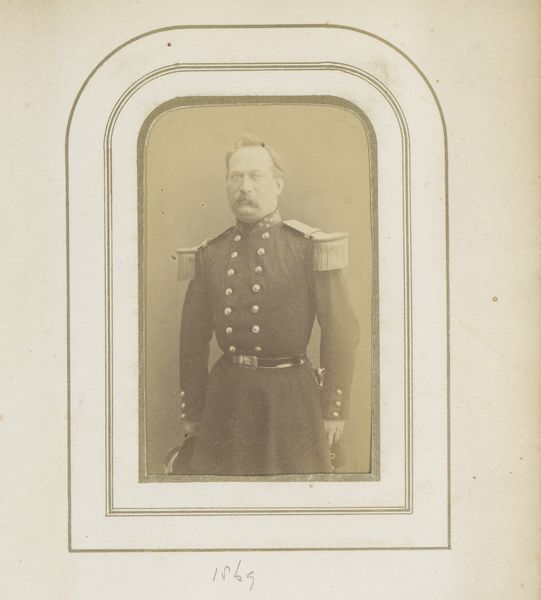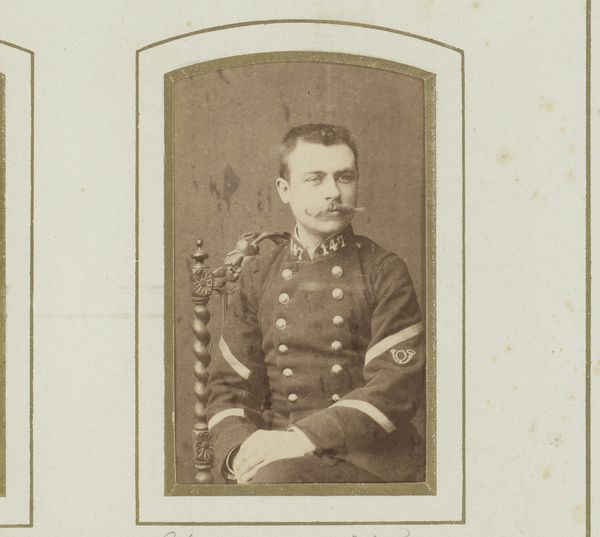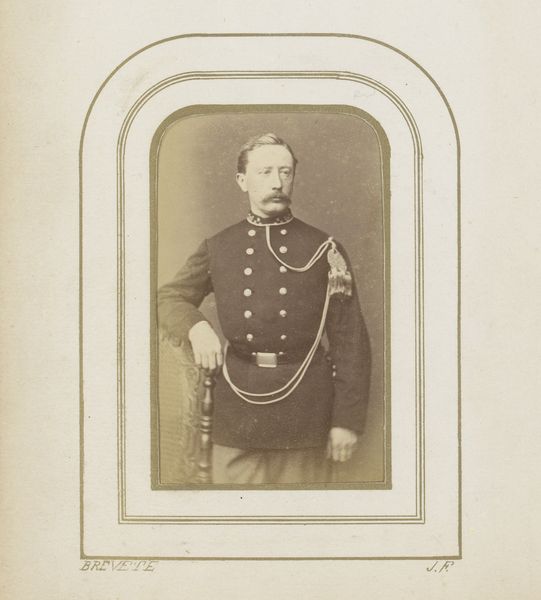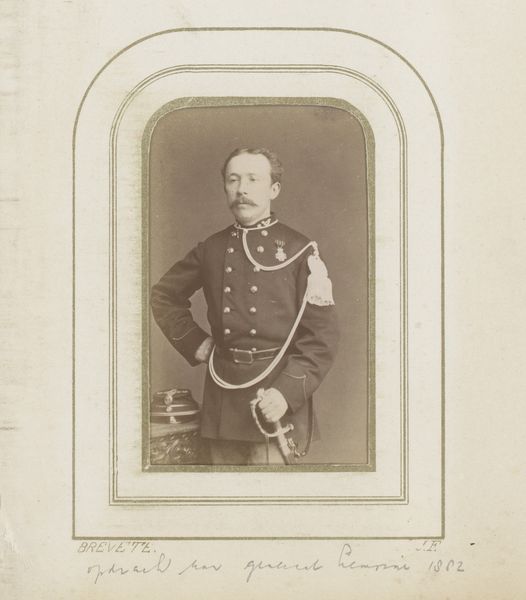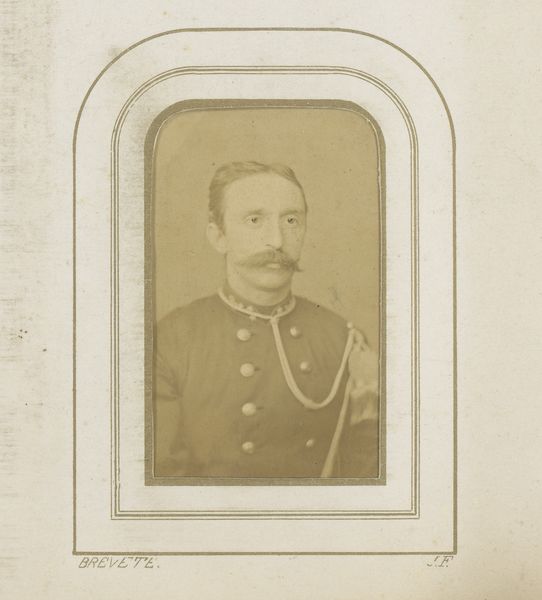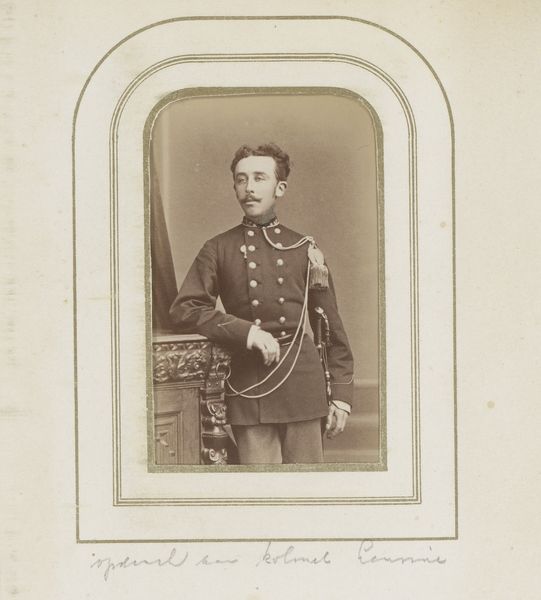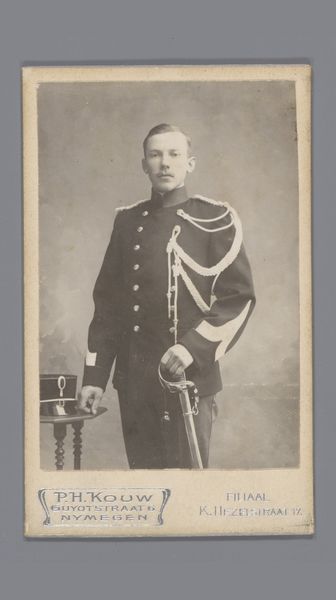
daguerreotype, photography
#
portrait
#
16_19th-century
#
daguerreotype
#
photography
#
historical photography
#
genre-painting
#
history-painting
#
realism
Dimensions: height 87 mm, width 53 mm
Copyright: Rijks Museum: Open Domain
Editor: Here we have “Portret van een staande man in militair uniform met zwaard,” a photograph, specifically a daguerreotype, by H. Fiedler, created sometime between 1860 and 1900. It’s striking how staged and formal the portrait is; it feels very much like image construction, an assertion of power. What’s your read? Curator: Indeed. The daguerreotype, and early photography in general, presented a novel way of constructing and disseminating identity. Consider the socio-political context: This photograph comes from a period of nation-building and increased militarization. The military uniform, the sword - these aren't merely sartorial choices. They represent power, allegiance, and perhaps even aspiration within a rapidly changing social structure. Who was this man and what social message was this image intending to portray? Editor: That makes sense. It's interesting how this photo, almost like history painting, might construct an ideal, perhaps of the citizen soldier. But why this particular medium? What does the photographic element contribute? Curator: Exactly. Daguerreotypes held a certain air of truthfulness, indexicality – the light captured something *real*. This perceived realism was crucial. By visually aligning an individual with the symbols of state power, such photographs sought to solidify the legitimacy of the existing power structure. The subject isn’t just a man; he becomes a visual embodiment of national pride. Think about how those images were displayed. Did he display it in his house, to show to visitors? Did he use this image as his public profile for institutions of social standing? What do those display methods say about the time period in which they were taken? Editor: So, the daguerreotype blurs the line between individual portraiture and a kind of state-sponsored visual propaganda. Curator: Precisely. By studying seemingly simple images like this one, we gain insight into the intricate relationship between art, identity, and power. Editor: I’ve never considered the social implication of image creation this early on, a perfect way to understand more about how powerful imagery has and can affect society!
Comments
No comments
Be the first to comment and join the conversation on the ultimate creative platform.
